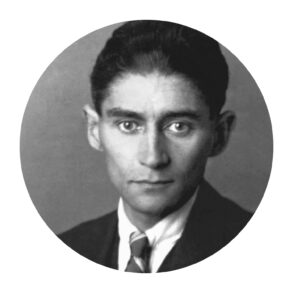“Homeopathy is a treatment that provides no medical benefit according to the current state of scientific knowledge.” This is how German Health Minister Karl Lauterbach justified his proposal on January 11 to remove homeopathy and all anthroposophic medicine therapies as standard health insurance benefits. The patient advocacy group weil’s hilft [because it helps] has launched a petition that has reached its goal of collecting 50,000 signatures and hopes to achieve 100,000 by March 7.
The savings from removing these services are so marginal that they cannot be the reason for this initiative—nor can it be the claim of a lack of scientific evidence. Hundreds of studies and meta-analyses show the statistically significant efficacy of homeopathy,12 not to mention the extensive evidence base for anthroposophic medicine.3
The assumption that there is a lack of scientific validity is linked to the conviction—which arises from the atomistic model of thought— that it is impossible to achieve effects in an organism with high dilution levels. This paradigm has been declared to be the only valid one. However, the German Constitution prohibits the state from taking sides with any particular scientific paradigm. Accordingly, the German Pharmaceuticals Act of 1976 states that “it cannot be the task of the legislator to establish a universally binding ‘state of scientific knowledge’ on controversial scientific positions by unilaterally prescribing certain methodologies, but rather it must comply with the existing scientific pluralism in the field of pharmaceutical therapy.”4
In 2018, Peter Matthiessen pointed out how a “mono-paradigmatic reductionism” always ends up going hand in hand with the development of totalitarian thought structures, “for which dogmatic ideology means everything, while respect for the citizen’s right to self-determination, tolerance towards representatives of other ways of thinking and practice, the individual pursuit of knowledge, and respect for human dignity mean nothing.”5 This is what is happening right now: the freedom of an open-ended search for scientific knowledge is being denied by the state.
Three years before the founder of cellular pathology, Rudolf Virchow, delivered his 1845 speech “On the Need and Correctness of Medicine from a Mechanical Point of View,” the founder of homeopathy, Samuel Hahnemann, described in The Organon of the Healing Art, how a natural substance, through dilution and shaking in a medium (known as potentization or dynamization) “develops the latent dynamic powers previously imperceptible and, as it were, lying hidden asleep in them. These powers electively affect the vital principle of animal life.” (par. 269)
Rudolf Steiner described how earthly substances have evolved from a living, spiritual state down into a physical-material form. Through homeopathy, they are transferred into a “decompression process,” and the substance is brought back to life through human activity. Hahnemann says: “It is highly probable that during such dynamization (development of its true, inner medicinal nature), the material substance eventually dissolves completely into its individual spirit-like essence and that its crude state can be regarded as actually consisting only of this spirit-like essence, as yet undeveloped.” (footnote to par. 270) With homeopathy, Hahnemann preserved the spiritual view of substance in the age of materialistic medicine ushered in by Virchow, which explains disease solely in terms of cellular (and, nowadays, molecular) principles.
The Inner Forces of Matter
Rudolf Steiner built on this “acknowledgment of the spirituality of external material substances” and expanded the concept of homeopathy—for example, with the idea of using low potencies for diseases of the metabolic-limb system and high potencies for diseases of the nerve-sense system. He sheds light on potentization with regard to the original substance and the medium: “This medium adopts a new configuration; just as one who changes from the status of owner to that of debtor becomes a different factor in social life, so a substance changes to a state opposite to the normal and imparts this condition, which was formerly hidden inside it to its environment.”6 In the course of potentization, a substance subject to gravity imprints its inner forces like a negative on the “counter-space” of the medium and becomes receptive to the etheric forces radiating in from the cosmos.
In this way, these forces can influence the etheric organism of higher organisms and unfold rhythmically into the physical organism. Following a suggestion from Rudolf Steiner, Lili Kolisko germinated seeds by adding different potency levels of a remedy and obtained rhythmically oscillating potency curves with maxima and minima of growth at certain potency levels. She was the first to research the effectiveness of potentized medicines according to measure, number, and weight in exact experiments. She published these results in 1923.7 Lili Kolisko’s research has been confirmed many times over and is being continued today.8
The assault on homeopathy attacks the original impulses of anthroposophic medicine both externally and internally. This is about the forces of the etheric, from which all healing springs. With recent events, materialistic thinking, which is stuck in a one-dimensional paradigm, has reached the described stage of “totalitarian thought structures” that are now having an effect on life and restricting our freedom of therapy. Following the example of Lili Kolisko, it will take the unflagging activity of a large human community to reclaim and preserve this freedom and fill it with inner meaning.
Additional sources on the effectiveness of potentized remedies: Effectiveness of anthroposophic and homeopathic remedies
Read the Petition: Retention of the reimbursement regulation for homeopathic medicines
Translation Charles Cross
Photo Sofia Lismont
Footnotes
- H. J. Hamre, A. Glockmann, K. von Ammon, D.J. Riley, H. Kiene, Efficacy of homoeopathic treatment: Systematic review of meta-analyses of randomised placebo-controlled homoeopathy trials for any indication. Systematic Reviews 2023;12(1):191. DOI: https://doi.org/10.1186/s13643-023-02313-2.
- Institute for Complementary and Integrative Medicine, University of Bern, Stand der Grundlagenforschung und klinischen Forschung in der Homöopathie. [The state of basic and clinical research in homeopathy] (28.1.2024).
- D. Brauer, M. Girke, G. Soldner, The evidence base in Anthroposophic Medicine. Anthromedics: the Anthroposophic Medicine site (21.1.2024).
- German Parliament, Committee for Youth, Family, and Health. Bericht zur Neuordnung des Arzneimittelrechts. [Report on the reorganization of pharmaceutical law] Printed 28.04.1976.
- P. F. Matthiessen, Homeopathy and Intellectual Honesty. A Commentary. Deutsche Zeitschrift für Onkologie 2018;50:172–177.
- Rudolf Steiner, Spiritual Science and Medicine. Lecture on March 31st, 1920, GA 312.
- L. Kolisko, Physiologischer und physikalischer Nachweis der Wirksamkeit kleinster Entitäten [Physiological and physical proof of the efficacy of the smallest entities] Dornach 1997.
- K. Gaertner, S. Ulbrich-Zürni, S. Baumgartner, H. Walach, M. Frass, P. Weiermayer, Systematic reviews and meta-analyses in Homeopathy: Recommendations for summarising evidence from homeopathic intervention studies (Sum-HomIS recommendations). Complement Ther Med. 2023 Dec;79:102999. Epub 2023 Oct 26. PMID: 37898390.














Thank you for this excellent article.
However, the link for Footnote # 8 – “Lili Kolisko’s research has been confirmed many times over and is being continued today.8”
goes to a page with no content.
Can you please send the correct page?
I’m sorry for the faulty link, something went wrong there! Here is the correct link to the paper: https://www.sciencedirect.com/science/article/pii/S0965229923000869
I will correct it in the article as well.